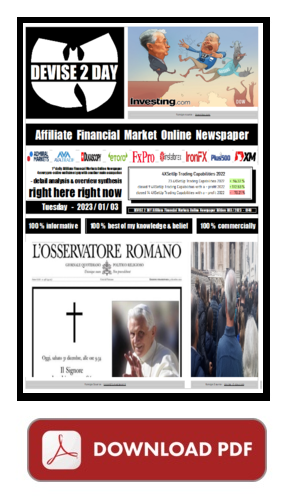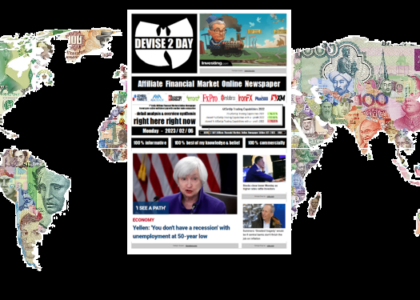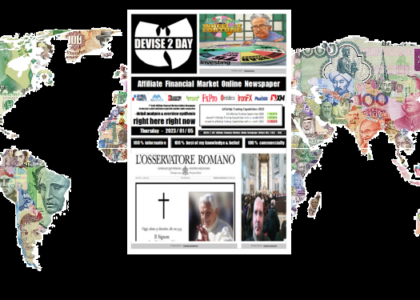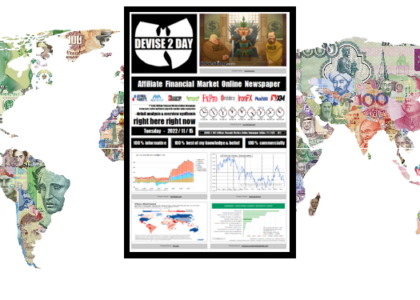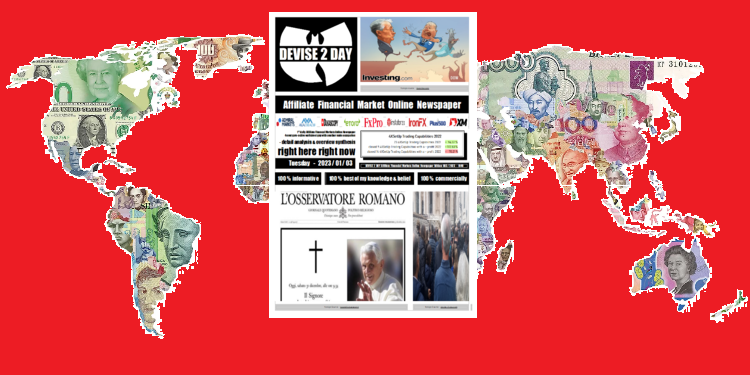
2023/01/03 (140.003) Technical Analysis – XETR-SAP & IDC-EURUSD
New Long EURUSD 4XSetUp Trading Capability At The Start Of 2023, For This Year
– Because I Expect A Similar Proce Action For The EUR This Year As For The USD In 2022
The End Of The Restrictive Hawkish Monetary Policy Of The FED Will Lead To A Weakening Of The US Dollar In 2023
In 2022, the U.S. Federal Reserve’s resolute and well-targeted major rate hikes led to a strengthening of the U.S. dollar against the euro. However, I assume that the Fed will not hike rates further in the second half of 2023. Let alone lower, as of this writing, early 2023 – as many in Chicago are already betting on. As a result, the EURUSD exchange rate has been rising for a few days, even weeks. Which is why I assume that this trend should tend to be confirmed over the course of 2023: A weaker US dollar (vice versa, tendentially stronger EUR). In 2022, central banks aggressively tightened monetary policy in their fight against inflation. While the ECB and/or the BOE hesitated somewhat, the FED was and is the leader in the fight against inflation organized by its own political class. The US dollar has also strengthened against the euro and other major currencies because the Fed has acted more aggressively than other major central banks. And the trend towards de-risking has also strengthened the US dollar from time to time. As a result, the EUR/USD ratio has fallen below parity. In 2022, central banks aggressively tightened monetary policy in their fight against inflation. The US dollar has strengthened against the euro and other major currencies as the Fed has acted more aggressively than other major central banks. The trend towards de-risking has also strengthened the US dollar from time to time. As a result, the EUR/USD ratio has fallen below parity. For 2023, we expect the US dollar to start reversing. The US Dollar Index (with 58% Euro, 14% Yen and 12% Sterling) has been in an uptrend since August 2021. But now this trend seems to be running out of steam.
Dowisher Fed Will Lead The US Dollar Weakening In 2023
In 2022, the US Federal Reserve’s major rate hikes led to the US dollar strengthening against the euro. However, we expect the Fed to cut rates again in the second half of 2023. As a result, the US dollar is expected to fall again against the euro. In 2022, central banks aggressively tightened monetary policy in their fight against inflation. The US dollar has strengthened against the euro and other major currencies as the Fed has acted more aggressively than other major central banks. The trend towards de-risking has also strengthened the US dollar from time to time. As a result, the EUR/USD ratio has fallen below parity. For 2023, I expect the US dollar to start reversing. The US Dollar Index (with 58% Euro, 14% Yen and 12% Sterling) has been in an uptrend since August 2021. But now this trend seems to be running out of steam.
US Stocks Start Year On Sour Note As European Stocks Rise For Second Day
Major US stock indices failed to sustain early gains and closed in the red on Tuesday, the first trading day of the year, amid persistent concerns that the Federal Reserve will continue to raise interest rates and hurt growth to bring inflation down to its target. The Dow erased a near 200-point gain and closed below the flatline and the S&P 500 lost 0.4%, as the 4% decline in crude oil prices pressured energy giants. In the meantime, the Nasdaq 100 underperformed and dropped 0.7%, remaining under pressure after sliding 33% in 2022 as aggressive monetary tightening continues to hit the rate-sensitive tech sector. Tesla plummeted 12.4% after the electric-vehicle maker missed its 2022 delivery target, and Apple dropped 3.7% after reports that the tech giant will cut production due to weak demand. Now, investors’ focus turns to minutes of the latest Fed policy meeting on Wednesday, which may provide insight into where the pain threshold lies.
European equities advanced for a second consecutive session on Tuesday, with the regional STOXX 600 closing more than 1% higher above the 430 mark, driven by gains in real estate and financials stocks. Investors welcomed CPI data from Germany showing inflationary pressures in Europe’s largest economy eased in December after the government’s initiative to lower household natural gas bills came into effect. Regarding individual share price movement, Germany-based company Hellofresh added over 9% to lead the STOXX 600. Domestically, the benchmark DAX 40 rallied roughly 0.9% to 14,200 points, driven by gains in the energy sector.
The US 10-Year Treasury Yield Consolidates Below 3.7% While 10-Year Bund Yield Retreats Further After CPI
The yield on the US 10-year Treasury note, seen as a proxy for global borrowing costs, bottomed below 3.7% as investors piled into government debt amid prospects that the Federal Reserve will gradually move away from its aggressive stance as the US could slip into a recession later this year. Some sectors of the US economy, including housing and industry, have already flashed recessionary signs. On top of that, tightening financial conditions have already started todent consumer spending and will likely lead to job losses. Now all eyes turn to the Federal Reserve’s minutes on Wednesday and the nonfarm payroll report on Friday for clues about the next move in interest rates.
The yield on the German benchmark 10-year Bund fell towards 2.3%, extending the decline from the over 11-year high of 2.6% touched December 30th as the cooler-than-expected inflation print ramped up hopes of less aggressive rate hikes by the European Central Bank. The German headline inflation declined to 8.6% in December, well below market estimates of 9.1% and retreating further from the 10.4% peak hit in October, largely due to government-backed discounts on energy bills. Meanwhile, concerns over a potential global recession mounted as major central banks are set to tighten monetary policy further in 2023.
However, DXY Bounces Back Towards 105 Because Euro Was Today On Track For Biggest Fall In Near 4 Months
The dollar strengthened sharply against a basket of major currencies on Tuesday, moving towards the 105 mark in the run-up to minutes from the Federal Reserve’s December meeting, which could provide cues on its policy tightening path.
However, the Euro fell more than 1% to $1.05 on Tuesday and is on track for its biggest daily fall since September 23rd after fresh data showed German inflation slowed more than expected in December, mostly due to government measures to contain energy bills for households and businesses. The new data however, is not expected to change the ECB’s plans. Yet, the common currency holds close to its strongest level since June as the European Central Bank is seen raising interest rates further at a significantly steady pace to tackle inflation, which is still well above the central bank’s 2% target. The euro lost about 7% against the USD in 2022, having touched a 20-year low of $0.96 back in September, as investors rushed for safety on the prospect of a severe economic recession in Europe amid the ongoing war in Ukraine, rising borrowing costs and stubbornly high inflation.
good morning, good day, and/or good night
at whatever time, wherever you are !
right here right now :

